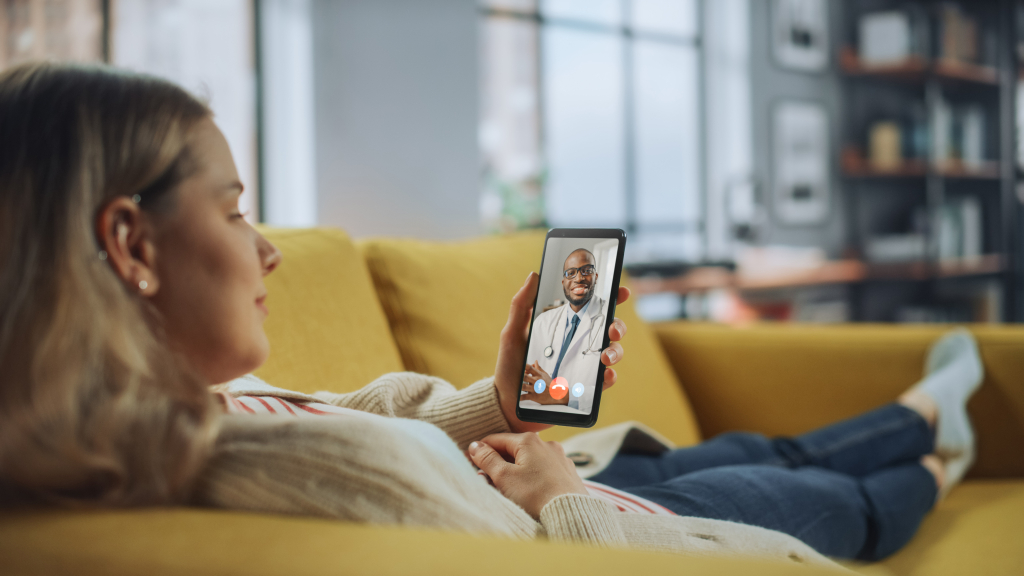Navigating Travel Industry Risks with Intelligent Communications
We’re going to explore some real-life unforeseen circumstances that the travel industry has had to navigate and how intelligent communications solut...
If ever there was an industry in which effective communication is critical, it is the healthcare industry. With so many patients and other moving parts entering and exiting hospitals and general practices every day, healthcare workers need a communications system that runs as efficiently as possible at all times, with minimal downtime. They also require a system that offers the in-depth insights needed to improve overall operations, maintain a high level of care and ensure staff have access to the information they need.
Unified Communications has emerged as such a communications tool that is already widely used by businesses of all kinds, to ensure staff and patients can enjoy a consistent line of contact while also being able to share any information that is prudent to successful operations on all sides. But what exactly is Unified Communications for healthcare teams? Why is it a huge step up from existing systems, and why should more healthcare providers be looking at Unified Communications as their next technology investment? Keep reading to learn more.

Unified Communications systems are digital platforms designed to house all the essential communications elements a business needs to remain connected and productive in the digital age. While it was once the case that a business could only communicate effectively via email or phone, in today’s hyper-connected world many different communications methods need to be adopted and maximised if any business hopes to provide a top-quality service to its customers and stay ahead of the game.
Think of Unified Communications platforms as the ultimate toolbelt for business communications; rather than needing to open new applications to communicate with your colleagues and customers, UC platforms house every necessary communication tool, all conveniently located in one application.
These platforms include access to email, voice, instant messaging, file sharing, video conferencing and so much more, making them the best all-in-one solutions for business communications on the market today. Better still, businesses can save a fortune by cancelling multiple subscriptions to various communications platforms and, instead, can rely solely on a single, all-encompassing and easy-to-use solution.

In any healthcare premises – be it a GP surgery, hospital, or otherwise – there are always a lot of parts in play and patient health never rests entirely on the efforts of just one person. It’s a team effort. This is why reliable communication between all team members, at all times, is the key to keeping patients happy, satisfied and well cared for. However, outdated communications systems reliant on legacy technology can hinder effective communications in healthcare organisations, which will undoubtedly create a domino effect, leading to less-than-stellar patient care.
To make matters worse, this effect is amplified when you consider the sharing of information across different healthcare departments and members of the healthcare hierarchy can be difficult as it is. With everyone being so busy and only focusing on select methods of communication that work for their own needs and schedule, essential information can easily be missed, with patients suffering as a result.
But with Unified Communications platforms, anyone can safely share important patient information with anyone else within the organisation, in any format that’s relevant, quickly and easily. As all forms of communication are housed in a single platform, and because the platform can be implemented on a company-wide basis, the needs of individual patients can be shared accurately and at pace across any departments, cutting response times and creating a more efficient working environment, for the benefit of both patients and staff.
According to statistics released by The King’s Fund, patient satisfaction levels in the NHS fell to just 29% in 2022. Not only is this a 7% decrease from the year prior, it indicates the lowest level of patient satisfaction in UK healthcare since the survey began 40 years ago. While many varying factors will be at play, it is reasonable to assume a lack of quality care due to poor communication among staff is a contributing factor as to why patients feel this way.
Specifically, after admittance, patients waiting to be seen or waiting for the results of important tests to be shared among staff and delivered promptly can be of great annoyance and can result in more patients taking up unnecessary bed space. This creates a backlog that stretches to countless other patients, which is how unsightly waiting lists emerge.
But thanks to the added speed and efficiency in information sharing provided by Unified Communications systems, staff can receive the results they’ve been waiting for far quicker, without the need to log on and off multiple communications platforms, or wait to be handed a paper sheet (more on those in a moment). This means patients can be given the treatment they need sooner, alleviating their suffering and frustrations, while also contributing to a much better running operation.
Not only this, but the instant sharing of accurate patient information at all times raises the likelihood of a potential health issue being caught early, as well as offering the chance for a more personalised form of care. For example, the level of in-depth patient notes that could be shared through Unified Communications systems with the right individuals could include details that offer a clue as to why a patient feels a certain way. With a little investigation by those more qualified to deal with certain issues, these seemingly minor details could be the key to unlocking health issues far quicker, saving lives and increasing recovery times in large numbers.
According to data from the Harvard Business Review, employees in large organisations spend up to four hours a week toggling between different applications as part of their job. In a standard business setting, losing this amount of time represents countless lost hours of productivity which would negatively affect a business’s prospects and future success. But, in a healthcare setting, losing this amount of time toggling could represent plenty of lost opportunities to improve patient outcomes, or even save lives.
With the various ways those within the healthcare sector are expected to communicate in the modern day, application toggling is to be expected, which is why it could be difficult to avoid the lost hours mentioned above. However, Unified Communications systems offer a solution to this problem. As all major forms of communication are housed under a single, well-rounded platform (rather than being scattered) staff can access the communications tools they need in an instant, without wasting precious time.
In a short timeframe, this saved time might not look like much. But when taken over a period of months or even years, the sheer volume of hours saved will be evident for all to see. In a healthcare setting, these saved hours then represent hours that were better spent caring for patients, improving the quality of care, or raising standards in another unseen way.
There were approximately 353 million victims of a data breach in 2023, according to data from Governing.com, making the need for effective data security scarily apparent. It would be easy to assume that the majority of these breaches were the result of hackers breaking into company networks to steal data. But, in actuality, most data breaches come as a result of human error, in which employees unknowingly or accidentally share sensitive information with someone or a platform outside of their own firm. Complicated and ineffective communications systems make it easy for this to happen, as workers can easily become flustered and send sensitive information across an array of platforms, eventually landing the information in the wrong hands.
However, Unified Communications systems offer a great way to both share sensitive patient data internally and keep it protected at all times. Modern Unified Communications systems employ stringent security measures, including end-to-end encryption, which scrambles data between two points making it unreadable to anyone outside the organisation. When taken as Unified Communications as a Service (UCaaS), a third-party provider is placed in charge of handling security measures for the platform, making sure it is consistently updated with the latest defences, leaving IT staff with less to worry about and more time to focus on important tasks.
As the system is cloud-based, with important documents easily accessible to anyone with the correct permissions at any time, the need for physical documents which could be lost or stolen is greatly reduced, also helping to keep patient data safe, secure and shareable as and when necessary. Electronic health records can also be accessed through the platform, making it truly versatile in a healthcare environment. Plus, in the event of an on-site data disaster, in which physical documents or hard drives are unfortunately destroyed, patient data is preserved in an off-site server, making it easy to pick up the pieces and maintain a consistent level of care, even in dire circumstances.
Understandably, the use of video messaging applications skyrocketed during the early months of the COVID-19 pandemic, with many businesses turning to popular video tools to remain connected with their colleagues and customers. However, despite the threat of COVID being relatively low at the moment, video conferencing has continued to rise in popularity, with the market expected to increase exponentially over the next few years.
As a key element of Unified Communications, video conferencing applications allow healthcare professionals to add a visual element to any conversation which requires a more detailed explanation for all to be clear. This is especially useful in the healthcare profession, in which many fine details may be required to fully comprehend a patient’s status. As the video conferencing application is housed within the Unified Communications platform, UC-based phone calls can quickly be transformed into video chats without the need to end the original call, saving time and effort.
From a medical standpoint, video conferencing tools can be exceptionally helpful in “seeing” patients if they’re not able to make it to a doctor’s practice or hospital, or if there are no in-person appointments available. By speaking with a patient through a video conferencing platform and being able to view any physical issues, doctors have the chance to accurately diagnose patients and offer the right course of action, all without the patient ever leaving their home. This can help cut the risk of further problems arising by having patients seen quicker than would have been possible via in-person appointments only.

If UC solutions sound like the tools your healthcare facility or organisation has been looking for to bolster communications, improve patient care quality and build stronger relationships, consider onboarding the technology with Elite Group.
As business communication system specialists with decades of combined experience in the space, we are your ideal partner to make the most of Unified Communications and maximise its many benefits in rapid time. With Elite Group, you will be assigned a dedicated account manager who will oversee all aspects of your technology, including monitoring its usage over time to spot where improvements can be made, so you don’t have to. They will also serve as your first port of call should you encounter any technical issues. But the beauty of UC is that because the platform is cloud-based, most issues can be solved remotely in a matter of minutes, without you needing to lift a finger.
With prestigious partnerships with some of the world’s leading communications and technology companies – including 8×8 and Microsoft – we’re trusted to deliver exceptional products and services for all our clients, helping them take their offerings to the next level.
For more information on Unified Communications for healthcare, or any of our products, speak to an Elite Group expert today.